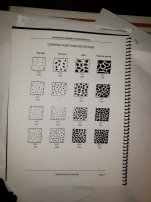Laurentian
Stainless
- Joined
- Mar 2, 2008
- Location
- Canada
Hi Guys,
Need some advise as I discovered some wear on our Kent surface grinder we bought new in year 2000. This machine gets cleaned weekly, has hand pump lube and gets taken apart for a deep clean and lube every 5-8 years or so. However a new job came in about 8 years ago and one of our good but sometimes hamfisted machinists likes to run it without the back splash strips in place as they get in the way of a custom fixture. Problem gets compounded when he dresses the wheel ( we never got the overhead dresser for it.. ) and sprays wheel grit all over the place.
Anyhow the back portion of the Y axis V ways are now lightly scored and flaking is long gone. Flaking on the front portion is still present and visible when cranked all way out. I'd like to take the saddle off soon and attempt to clean, brush or even lightly scrape out embedded grit from the lower Turcite Vee and then lightly hand stone the ways, maybe even give them some flaking back to hold oil for now. Would I be harming the machine more than anything or should I just keep cleaning it until I can have the regrind done ? I don't want to move the machine out of it's tight location so if it needs new Turcite I'll have to do it on site to the best of my abilities using the fresh saddle as the pattern and scrape it in.
I have since shown our machinist the damage done and he's taking better care to prevent spraying grit all over the backside. He deflected the issue at first when confronted but I figure it's how he rolls from the other jobs he's had at previous high pressure shops. We're the cleanest place he's worked at but sometimes still needs redirection even after a decade but I do want him around till retirement, so I'm going to repair it and better monitor.
Guess I'm just a little upset at having a machine we bought new get damaged due to carelessness, ignorance and the fact I could maybe have done more. We lost our millwright apprentices when they got hired and it took me awhile to catch up as I do all the maintenance here myself. Anyhow basically just want to make it right again, run well and precisely without having to go full rebuild is all.
PS : It does have the dust collector / coolant unit
As for the Harrison lathe rebuild in my older thread that will be continued in March. We got the bed back from regrind and it has been sitting on the skid with the lathe base, oiled up and covered. Will post when I start assembly.
Need some advise as I discovered some wear on our Kent surface grinder we bought new in year 2000. This machine gets cleaned weekly, has hand pump lube and gets taken apart for a deep clean and lube every 5-8 years or so. However a new job came in about 8 years ago and one of our good but sometimes hamfisted machinists likes to run it without the back splash strips in place as they get in the way of a custom fixture. Problem gets compounded when he dresses the wheel ( we never got the overhead dresser for it.. ) and sprays wheel grit all over the place.
Anyhow the back portion of the Y axis V ways are now lightly scored and flaking is long gone. Flaking on the front portion is still present and visible when cranked all way out. I'd like to take the saddle off soon and attempt to clean, brush or even lightly scrape out embedded grit from the lower Turcite Vee and then lightly hand stone the ways, maybe even give them some flaking back to hold oil for now. Would I be harming the machine more than anything or should I just keep cleaning it until I can have the regrind done ? I don't want to move the machine out of it's tight location so if it needs new Turcite I'll have to do it on site to the best of my abilities using the fresh saddle as the pattern and scrape it in.
I have since shown our machinist the damage done and he's taking better care to prevent spraying grit all over the backside. He deflected the issue at first when confronted but I figure it's how he rolls from the other jobs he's had at previous high pressure shops. We're the cleanest place he's worked at but sometimes still needs redirection even after a decade but I do want him around till retirement, so I'm going to repair it and better monitor.
Guess I'm just a little upset at having a machine we bought new get damaged due to carelessness, ignorance and the fact I could maybe have done more. We lost our millwright apprentices when they got hired and it took me awhile to catch up as I do all the maintenance here myself. Anyhow basically just want to make it right again, run well and precisely without having to go full rebuild is all.
PS : It does have the dust collector / coolant unit
As for the Harrison lathe rebuild in my older thread that will be continued in March. We got the bed back from regrind and it has been sitting on the skid with the lathe base, oiled up and covered. Will post when I start assembly.
Last edited:



